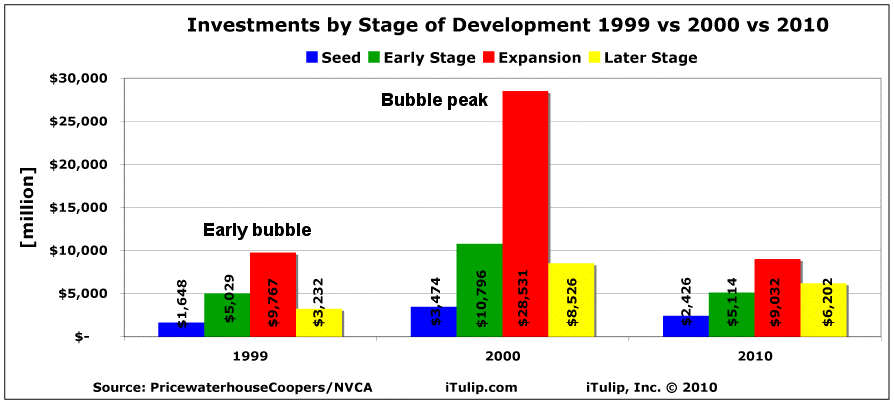Re: Technology bubble ten years later: The money’s not back
That comment hit home. Historically we've always invested a percentage of our wealth in start-ups. As a basket of investments, they have been very good performers for us long-term, as we typically take an active role in coaching & governance.
4 months ago - we decided to double our VC/Seed Stage funding - which was a major decision. Last week we just completed a nice deal with a company who has a great product & patent in the Biotech/Medical Devices sector. The deal before that - was in Energy. We are still looking at several more - and they are almost all in the sectors you identified above.
Personally, I feel more comfortable taking educated bets in assisting others with their sweat equity, than I do with most of the other "financial product" alternatives out there.
EJ: The good news is that if you are a Biotech, Medical Devices and Equipment, Electronics/Instrumentation, or Energy – who could have known? – start-up company, 50% of the funds invested in 2010 are going into your industries.
4 months ago - we decided to double our VC/Seed Stage funding - which was a major decision. Last week we just completed a nice deal with a company who has a great product & patent in the Biotech/Medical Devices sector. The deal before that - was in Energy. We are still looking at several more - and they are almost all in the sectors you identified above.
Personally, I feel more comfortable taking educated bets in assisting others with their sweat equity, than I do with most of the other "financial product" alternatives out there.




Comment